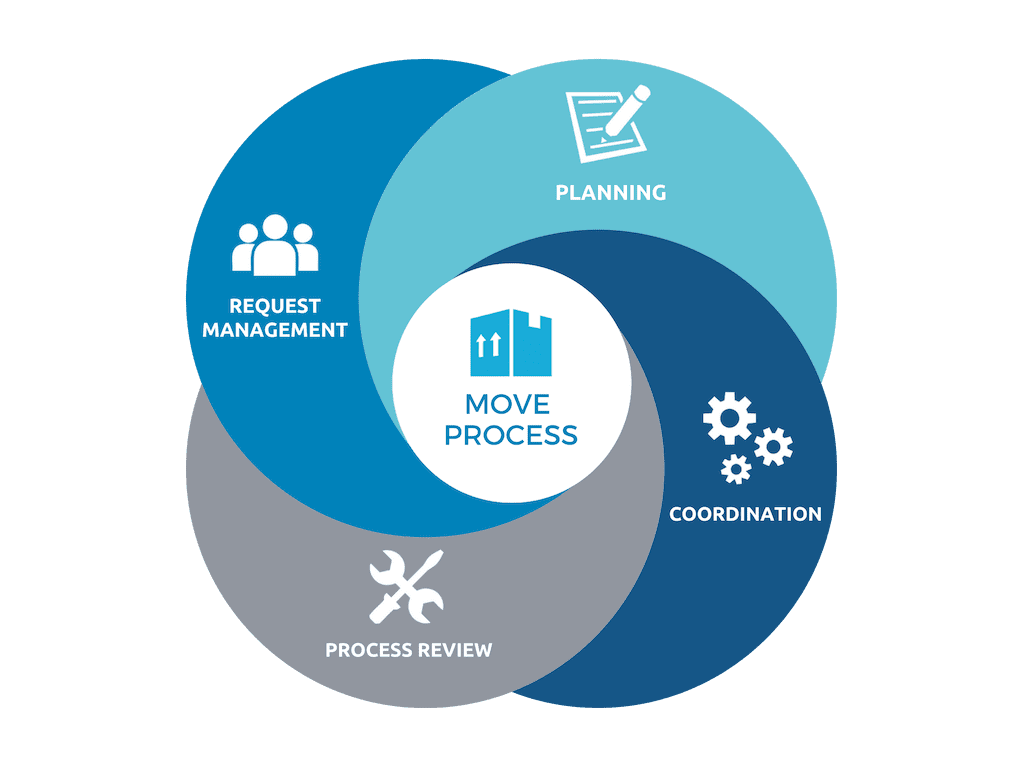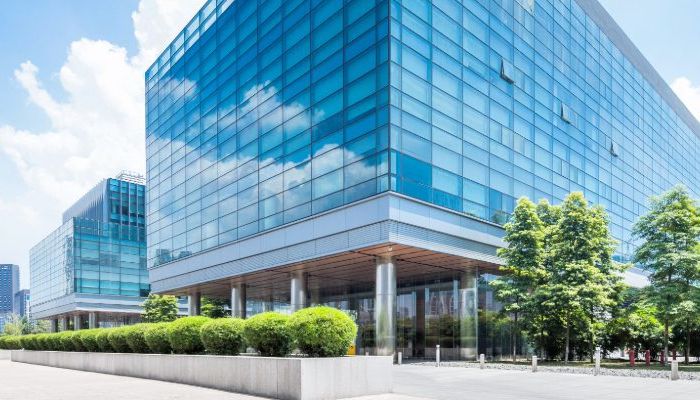Move management is the process of relocating employees from one place to another. It can also involve moving them in and out of your organization.
There are different types of office move management. Moves, Adds, and Changes (MAC) are usually simple.
You might move an employee from one location to another. You could also add new employees and help them onboard. Sometimes, an employee gets a promotion and needs to change workspaces.
You might also be tracking space standards. An employee who got a promotion may have worked in a cubicle or shared space. Now, in their new role, they need to be in an office.
Tracking all of this is part of your MAC process. It is important for understanding move management in your organization.
The other type of move–which is much bigger and more complicated–is a project move. A project move involves taking a few people and moving them to thousands. This can mean relocating them to a new place, reorganizing a building, or even opening a new building.
A project move needs careful coordination from many people. This helps ensure the move goes smoothly.
What is move churn?
According to FM Guru Consultancy, churn is the term used by facilities professionals to describe the continuous cycle of moves and changes within the work space. People normally express the churn rate as a percentage of the total number of occupants who moved during the year.
All facility professionals face churn. Organizations are dynamic and must move people and equipment to adapt to change.
Churn can happen due to business challenges. You might be growing or shrinking your business. There could also be an acquisition or a renovation happening.
There are also the daily activities of your occupants. An employee might move from one department to another. They may submit a request to be closer to their team. Some might want access to more natural light.
Many stakeholders are affected by a move. This includes IT, HR, move liaisons, and the person being moved.
Their work gets disrupted whenever a move happens. On average, each employee who is moved experiences about four hours of downtime.
Many organizations do not understand the real costs of moving. This includes both small and large moves. They also overlook the loss of productivity that can happen during the process.
The first step in understanding your organization’s move management process is knowing your churn rate. After that, you need to get it under control. Getting your churn under control is critical to the success of your organization.
How You Can Better Understand Your Move Process

Moves don’t happen instantly. They need a lot of communication between everyone involved. Many things happen during a move. But at a high level, all moves follow the same overall process:
Move Request Management
Move requests identify what employees should move and when as well as what small or large scale moves are in the works. Request management allows you to track these types of requests and every organization needs some way to manage this.
Some organizations handle their move requests by using email. However, this is not the best choice. You have to depend on someone or a group to track all your incoming requests manually.
A good practice is to find a solution that automates your move management process. I will explain this in more detail later in the post.
You need a way to manage requests. This helps get people the space they want on time. It should be smooth and cause little disruption to the organization.
Move Management Planning
Planning involves coordinating many groups that help with the moving process. This requires many people beyond just facilities and real estate. It also includes those who are not directly involved in the move.
Move planning involves coordination from different departments. First, inform HR when someone is starting or getting promoted. This helps them manage office assignments.
Next, IT needs to track the move and the location of important assets. These assets include the employee’s chair, phone, laptop, and more. Finally, facilities and telecom groups also play a role in the process.
Move Management Coordination
Move coordination means sharing the right information at the right time with both internal and external vendors. This helps ensure the move happens in the correct order and on time. What if your employee is all ready to move and your external vendor isn’t ready or has the wrong date?
Being able to not only coordinate with external vendors but having internal coordination within your organization is crucial. Coordination starts when the move is planned. It continues through the entire process.
We ensure the move goes as planned. We also make sure the employee settles into their new location smoothly. Our goal is to minimize disruption to their work.
Process Review
After the move, a review should be conducted using follow up surveys. How did the move go? Is the employee able to accomplish their job in their new spot?
Are they satisfied with how the move went and their new location? Could things have gone better? Did everything get moved in time?
Analysts can then analyze this move data to uncover issues and determine areas for improvement in the future. Did you actually perform as a team and are the employees happy with the process? This process review enables you to continually optimize and improve your move process over time.
Technology to Improve Your Move Management Process
There are many ways to manage your moving process. You can track each move manually or use a special tool. You might also choose a full facility management platform.
Each method has its own benefits. You need to find the right approach for you. It should match your business goals and objectives.
Get started today with our Office Move Management Calculator to see how much move management software will save your company.










